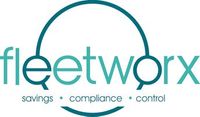How to stop cost creep becoming a horror story for company cars

We believe it is good practice to have complete visibility of your car fleet spend. However we appreciate this can be quite a challenge, as large fleets will involve myriad suppliers across numerous countries.
Best practice is to control the data and place it in cost categories: then work with it to understand spend and savings opportunities. When this is done daily it becomes second nature. But when you actually stop and take a step back, the number of different cost codes is very surprising.
We did a little exercise to review the categories that we use so we could establish the optimum means of managing the data. We removed some, merged some, created some new ones and at the end of the exercise we had 60 cost codes, sitting across 16 categories.
Now this may seem a little excessive, but it does mean complete control over spend and minimal cost creep.
A common issue in supply chains
Cost creep is a very common issue in supply chains. And within company car fleet supply chains it can become a big problem. When a company decides to outsource its company car fleet it will benefit from short-term savings. At this point new suppliers are on their very best behaviour, cutting deals and slashing cost. The client will enjoy some pretty substantial cost savings during the first couple of years. However, and here’s the rub, as the contract matures and becomes less visible to the client, costs begin to slowly creep up until, if remaining unchecked, they can accelerate back to pre-outsourcing levels.
They do this because of what was mentioned earlier. The 60 cost codes that provide 60 opportunities for suppliers to add margin.
Cost categories can cover areas such as accident charge, end of contract charge, servicing, management fee and insurance. Whereas codes can cover costs such as third party claims payment, loss on sale fee, vehicle movement costs and accident management fee. Being very detailed is key to keeping the creep under control.
It may not be widely appreciated, but only about 20% of a leasing providers revenue will be from declared management fees. The remainder comes from margin applied to the myriad costs associated with running a large car fleet.
This is why it is important to be fanatical about the numbers. It is why it is important to capture every little invoice and statement and place it in its rightful place. Because only then can each cost code be interrogated to ensure the cost is correct, that it is being applied to the correct vehicle, and any margin is within contract.
This article is part of a series based on the whitepaper: Unintended Consequences of Outsourcing Company Car Fleets: And How to Avoid Them
This article was supplied by Fleetworx.
Supplied by REBA Associate Member, Fleetworx
Fleetworx help the car fleet supply chain work better for everyone.







